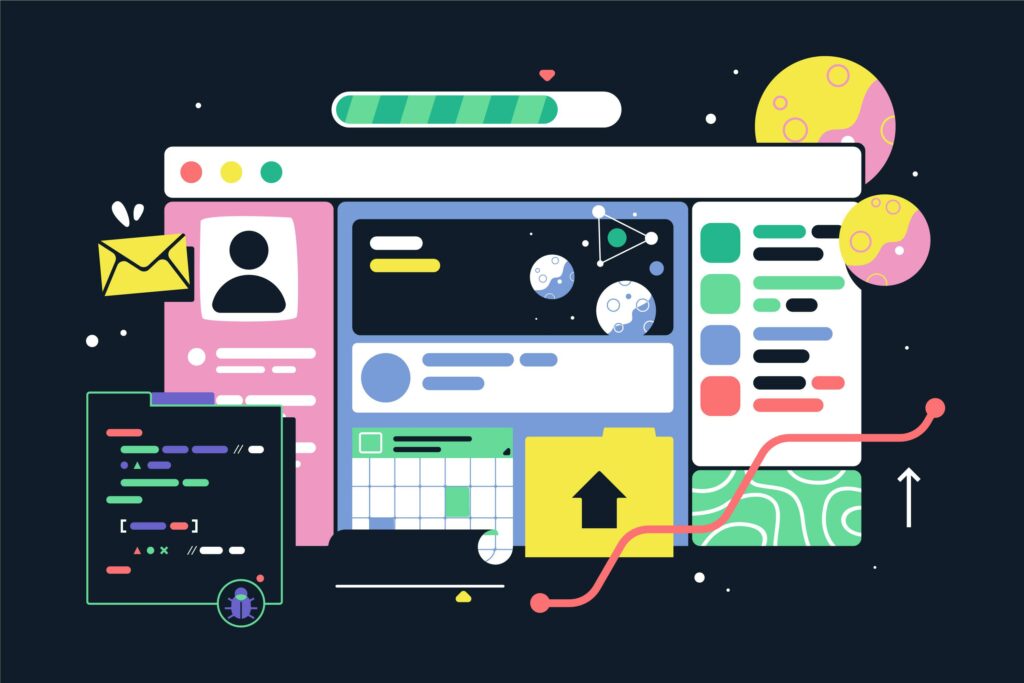Web accessibility ensures that websites are usable by everyone, including people with disabilities. This means designing and developing web content that is perceivable, operable, understandable, and robust. Accessible websites provide equal access and opportunity to people with diverse abilities, enhancing their online experience. For example, individuals with visual impairments rely on screen readers to navigate web content. If a website is not designed with accessibility in mind, these users might face significant barriers. Therefore, designing for accessibility is crucial. This not only benefits users with disabilities but also improves the overall user experience, leading to better engagement and retention.
Importance of Inclusive Design
Inclusive design takes web accessibility a step further by considering the diverse needs of all users. This approach involves designing products and services that can be used by the widest range of people, regardless of age, ability, or circumstance. By embracing inclusive design, you create websites that are more usable and enjoyable for everyone. For instance, an inclusive website might feature larger buttons that are easier to click for users with motor impairments, or videos with captions for users who are deaf or hard of hearing. Inclusive design is not just about meeting minimum standards; it’s about creating a positive experience for all users, which can enhance your brand reputation and expand your audience reach.
Understanding Accessibility Guidelines
WCAG Overview
The Web Content Accessibility Guidelines (WCAG) are the cornerstone of web accessibility. These guidelines, developed by the World Wide Web Consortium (W3C), provide a comprehensive framework for making web content accessible to people with disabilities. WCAG is organized around four key principles: Perceivable, Operable, Understandable, and Robust (POUR). Each principle addresses different aspects of accessibility. For example, the Perceivable principle ensures that users can perceive the information presented, such as providing text alternatives for non-text content. The Operable principle ensures that users can interact with the website, such as making all functionality available from a keyboard. Adhering to these guidelines is essential for creating accessible websites.
Legal Implications of Accessibility
Web accessibility is not just a best practice; it’s also a legal requirement in many regions. Laws such as the Americans with Disabilities Act (ADA) in the United States, the Equality Act in the United Kingdom, and the European Accessibility Act mandate that websites be accessible to individuals with disabilities. Non-compliance can result in legal action, fines, and damage to your brand’s reputation. For example, numerous lawsuits have been filed against companies with inaccessible websites, leading to costly settlements and negative publicity. By understanding and implementing accessibility guidelines, you can avoid legal issues and demonstrate your commitment to inclusivity.
Choosing the Right WordPress Page Builder
Accessibility Features in Popular Page Builders
WordPress page builders like Elementor, Beaver Builder, and Divi offer various accessibility features that can help you create inclusive websites. These features include keyboard navigation support, ARIA landmarks, and customizable templates designed with accessibility in mind. For instance, Elementor provides widgets that are accessible out-of-the-box, and Divi offers options to add ARIA labels to custom elements. Choosing a page builder with robust accessibility features can significantly ease the process of designing accessible websites.
Comparing Page Builders for Accessibility
When selecting a WordPress page builder, it’s essential to compare their accessibility features. Look for builders that offer comprehensive support for ARIA landmarks, keyboard navigation, and screen reader compatibility. Reviews and user feedback can provide valuable insights into how well these builders support accessibility. For example, Elementor is highly praised for its accessibility-ready widgets and templates, while Beaver Builder is known for its clean code and strong support for screen readers. By evaluating the accessibility features of different page builders, you can choose the one that best meets your needs.
Best Practices for Designing Accessible Websites
Text and Typography
Readable text is a cornerstone of accessible design. To ensure readability, use legible fonts and appropriate font sizes. Avoid using overly stylized fonts that can be difficult to read, especially for users with dyslexia or low vision. Providing sufficient line spacing and using headings to organize content logically also enhance readability. Additionally, text should be resizable without loss of content or functionality. For example, users should be able to increase the font size in their browser settings without breaking the layout of your website. By focusing on text and typography, you make your content accessible to a broader audience.
Color Contrast and Visual Elements
High color contrast between text and background is essential for readability, particularly for users with visual impairments. Use tools like the WebAIM Contrast Checker to ensure your color choices meet WCAG guidelines. Avoid relying solely on color to convey information, as this can be problematic for colorblind users. Instead, use additional cues like icons or text labels to support visual elements. For example, use both color and text to indicate required fields in a form. This approach ensures that all users can understand your content regardless of their ability to perceive color.
Navigation and Interactive Elements
Accessible navigation is critical for usability. Ensure that all interactive elements, such as buttons and links, are keyboard accessible. Provide clear focus indicators for interactive elements, so users can easily see where they are on the page. Use ARIA roles to describe the functionality of interactive elements, helping screen reader users understand their purpose. Consistent and predictable navigation also helps users, including those using assistive technologies, to navigate your website more efficiently. For example, a well-structured menu with clear labels and logical groupings makes it easier for users to find what they are looking for.
Tools and Plugins for Accessibility in WordPress
Accessibility Plugins
Several WordPress plugins can help you enhance your website’s accessibility. Plugins like WP Accessibility, One Click Accessibility, and Accessible WP offer features such as toolbar widgets, skip links, and ARIA landmark support. These tools simplify the process of making your site more accessible. For example, the WP Accessibility plugin provides a range of features to address common accessibility issues, such as enabling skip links and adding ARIA roles. By using these plugins, you can improve your site’s accessibility without extensive coding knowledge.
Testing Tools
Regularly testing your website for accessibility issues is essential. Tools like WAVE, Axe, and Lighthouse can identify accessibility problems and provide recommendations for improvement. Automated testing tools can quickly scan your site and highlight areas that need attention, such as missing alt text or insufficient color contrast. However, automated testing should be complemented with manual checks to ensure comprehensive accessibility. For example, manual testing can help identify issues with keyboard navigation or screen reader compatibility that automated tools might miss. By regularly testing your site, you can ensure that it remains accessible to all users.
Maintaining Accessibility Standards
Maintaining accessibility is an ongoing process. Regularly update your content and design to adhere to the latest accessibility guidelines. Training your team on accessibility best practices ensures that new content and features are accessible from the start. For example, content creators should know how to write descriptive alt text for images and use headings correctly to structure their content. Regular audits and user feedback can help you identify and fix accessibility issues promptly. By making accessibility a continuous priority, you can create a more inclusive website that serves all users effectively.
By following these guidelines and using the right tools, you can create websites that are accessible and inclusive for all users. This not only complies with legal standards but also enhances the user experience and broadens your audience. Designing for accessibility is not just a technical requirement; it’s a commitment to inclusivity and equal access for everyone.


